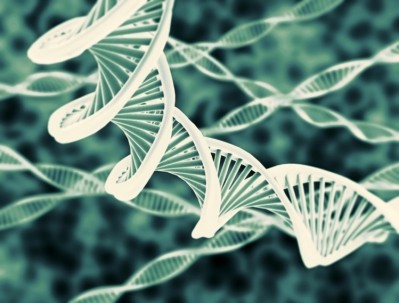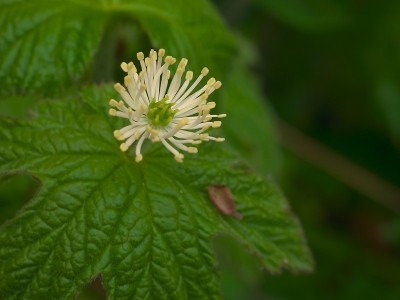Adulteration with bindweed: A big concern that nobody is talking about?

Data presented by Dr Danica Reynaud, NSF’s Global Director of Scientific Innovation, during a webinar hosted on the Natural Products Insider website revealed that 53.3% of the samples were deemed to be impure (ie. found to contain any level of an unlabeled plant species), while 46.7% were deemed to be pure.
“The most concerning results were the presence of toxic plant species,” Dr Reynaud told NutraIngredients-USA. “We were really surprised to find almost 30 different toxic species in close to 150 samples in our study. The most troublesome was the rampant adulteration by Convolvulus arvensis (bindweed), especially in oregano samples. This is a big concern that no one in the industry is talking about.”
Definition of adulteration
However, Michael McGuffin, president of the American Herbal Products Association, told us that the definition of adulterated used is legally inaccurate.
The official language from the Food. Drug & Cosmetics Act defines adulteration as: “If it bears or contains any poisonous or deleterious substance which may render it injurious to health; but in case the substance is not an added substance such food shall not be considered adulterated under this clause if the quantity of such substance in such food does not ordinarily render it injurious to health.”
This important distinction of what constitutes adulteration “changes the significance of the results”, said McGuffin.
Stefan Gafner, PhD, chief scientific officer for the American Botanical Council, voiced similar caution. “That [definition] is more nuanced and means you have to have it at a level that makes it a health concern. If something is in there at really low levels then it shouldn’t be considered an adulterant.”
The presence of bindweed also does not mean you find potentially hepatotoxic pyrrolizidine alkaloids, he said.
Despite such notes of caution, Dr Gafner said that the presentation is “intriguing”, and that the technology “gives you a global view of how complex an herbal raw material can be.
“There’s a lot we can learn from the results that Danica presents, but there are a few things we should be cautious about interpreting,” he said.
“I think we should treat the numbers with a grain of salt,” Dr Gafner told us. “DNA can bring a lot to the table but we have to be aware of its limitations.”
“A green powder is always adulterated unless proven otherwise”
“There are a number of new revelations the industry will surely want to understand which may help get people thinking about adulteration in a new way”
- Dr Danica Reynaud, NSF’s Global Director of Scientific Innovation
Dr Reynaud tested over 1,200 raw botanical samples were analyzed covering about 250 species were tested between August 2015 and August 2016 using Next Generation Target Specific DNA Sequencing (TSDS). The samples included a wide range of plant parts and forms. Powders are more than twice as likely to be adulterated compared to whole materials, said Dr Reynaud.
“We suspected that powders were more likely to be adulterated, because it is easier to ‘sneak’ fillers into them,” she said. “But this was the first time that we were able to confirm this suspicion because of our large dataset.
“It was also really surprising to see that what is commonly adulterated is not what people generally think. Plants like ginkgo and saw palmetto are often talked about in the industry as problematic, and we actually found no adulteration in them. On the other hand, more mundane species that are not on people’s radar as problematic were in fact highly adulterated.”
Among the most highly adulterated botanicals found were goldenseal, barleygrass, oregano, wheatgrass, chia seed, Valerian, and cranberry.
Publication
In a follow-on comment regarding the legal definition of adulteration, a spokesperson for NSF International told us: "Both Dr. Danica Reynaud and Michael McGuffin’s definitions are correct. The FDA definition is comprehensive as it relates to adulteration in several categories. The important message the industry may want to focus on is to be aware of their supply chain and test to ensure the quality and safety of their products."
Dr Reynaud confirmed that the data will published as an NSF International Technical Report in order to expedite sharing the information.
“Our goal is to share the information openly and freely, because we believe that the results can be very helpful to anyone in the botanical products industry- including suppliers, manufacturers, and those testing botanicals,” she said. “It will be published just prior to Supply Side West and available on the NSF Authentechnologies website.”
Limitations
The often-cited limitations of DNA technology are that, i) it cannot determine between plant parts (leaf, stem, root – the DNA is the same), and ii) it’s not totally quantitative. While the technology can provide information on the relative abundance of adulterants, it does not give actual levels (as ppm, for example).
Addressing the limitations, Dr Reynaud told us: "No DNA technology is capable of identification of the plant parts. This is why we always recommend conducting DNA testing first to ensure the identity of the species and to determine that there are no other unexpected species found in the sample that could cause potential safety or quality concerns. We then recommend following -up with necessary chemical and/or morphological testing. NSF International also offers HPLC, UPLC, HPLC testing and starting in early 2017, you will be able to order these tests along with DNA testing, together on the NSF AuthenTechnologies website."
She also confirmed that the technique is not quantitative. "We think of our Next Gen Sequencing as “semi-quantitative”; we get a rough idea of the level of impurities that are in a sample. Even though it is not strictly quantitative, a sample that has 1% of the DNA sequences from unexpected species is less of safety or quality concern than one that has 99% of the sequences. In summary, DNA can identify the presence of a toxic species which can be further analyzed by a quantitative chemical method that can assess its level in the material."
Resources
To watch the webinar, please click the following link: “Dirty Little Secrets: Current Trends in Toxic Weeks and Fraudulent Fillers in the Botanical Supply Chain”
Dr Reynaud will present the second half of the data at SupplySide West on Friday, October 07, 3-3:30 pm at the SupplySide Central, Level 1, Bayside Hall D, Booth EE182, and will be on the NSF booth (GG153) for a meet and greet 2–3:00 p.m. on October 6.









